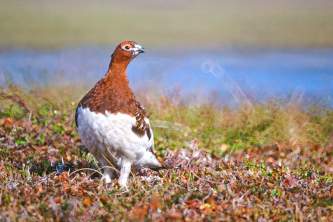Denali National Park Backcountry
Going on an extended hike in Denali’s backcountry? Here’s what you should know…
Low-Impact Hiking
River Crossings in Denali National Park
Glacier Crossings in Denali National Park
Denali National Park Bear Safety
Wildlife Safety in Denali National Park
Cooking in Denali National Park
Camping in Denali National Park
Drinking Water in Denali’s Backcountry
Backcountry Sanitation in Denali National Park
Mosquito protection
Denali Wilderness Gear Checklist
Denali Backcountry Permits
Bear Resistant Food Containers
Denali Backcountry FAQ’s
Minimum Impact Hiking in Denali National Park
To keep the Denali National Park backcountry in pristine condition for others, please take care in how you hike.
Hike on durable surfaces whenever possible, such as gravel river bars
Avoid hiking single file; spread out and disperse to prevent the formation of social trails. Denali National Park has enough man made trails (see Denali National Park Hiking)
River Crossings in Denali National Park
If you’re hiking deep into the Denali National Park backcountry, you may need to cross rivers. There are no bridges across rivers in the backcountry. You must negotiate your own river crossing and pack gear accordingly to keep dry in the event of an accidental swim. Water temperature is approximately 36 ºF (2 ºC), and a cold immersion can lead to hypothermia.
- Try to cross where the river is braided and dispersed, rather than concentrated into a single deep, narrow channel. The high silt content of Alaska’s glacial rivers sometimes makes it hard to judge the true depth of the water.
- River depths vary widely with rainfall and temperatures. Glacial rivers generally run lower in early morning hours, so plan accordingly. Warm winds high in the mountains can cause as much meltoff as hot sunshine.
- Veteran Alaska hikers often wear a necklace of lightweight bungee cord around their neck to which they attach a lighter and knife. If you get taken down by the river and lose all your gear, you’ll at least have a few critical survival tools.
Glacier Crossings in Denali National Park
Glacier crossings in Denali National Park are more of a concern for climbers than hikers or backpackers. If you do plan on taking a route in Denali which requires crossing glaciers, know that glaciers present numerous hazards and any form of glacier travel should be treated with respect and preparation.
- If planning a traverse over the upper ice and snow portions of a glacier, carry appropriate equipment, such as ice axe and crampons. Practice roped travel and know how to effect a crevasse rescue.
- If crossing the lower glacial moraine, be alert and use caution. While equipment is not required for this mode of travel, glacial moraine still presents many potential hazards, such as debris slides, ice caves, and uneven terrain. When you’re alone in the backcountry, remember that even a twisted ankle can become serious.
Denali National Park Bear Safety
Symbolic of the Alaska wilderness, both grizzly bears and black bears inhabit Denali National Park and may be encountered in the backcountry. To keep these magnificent creatures wild and enhance your personal safety, keep the following in mind:
- Make noise while hiking in Denali National Park to alert bears of your presence
- Use Bear Resistant Food Containers and store them 100 yards (meters) from cooking areas and tent sites
- Be alert for bears and alter your activities to avoid them
- Never run from a bear
- Pepper spray can be carried as an added precaution. However, it is useful only as a last resort in the event of an emergency, and should not be viewed as substitute for proper backcountry behavior.
Wildlife Safety in Denali National Park
Denali National Park is home to sheep, caribou, wolves, foxes, bears, moose, eagles, ptarmigan, and other wildlife that you are very likely to encounter in the backcountry. Please keep Denali’s animals wild:
- Do not feed or allow wildlife to obtain human foods.
- Maintain a minimum 1/4-mile (.7 km) distance from bears
- Do not approach or follow wildlife. Maintain a minimum 25 yards distance from all other animals, dens, and nests.
- If your presence alters an animal’s behavior, you are too close
Cooking in Denali National Park
Fires are not permitted in the Denali Wilderness. Fuel for portable camp stoves is available for purchase at the Riley Creek Mercantile, located near the Denali Wilderness Access Center.
- When cooking, remain alert for bears; be ready to pack up and move quickly.
Camping in Denali National Park
There are no established campsites in the Denali National Park backcountry; therefore, campsite selection is very important. You may have to spend 30 minutes surveying for the best place to establish your camp. Keep these guidelines in mind:
- Your tent must be at least 0.5 miles away from the Denali National Park road and not visible from it.
- Camp on durable surfaces such as gravel river bars; avoid damaging fragile tundra.
- In pristine areas like Denali National Park, avoid camping where others have camped.
- Do not move rocks or plants; leave the area as you found it so that future Denali hikers do not see signs of your use.
Drinking Water in Denali’s Backcountry
Giardia and Cryptosporidium are present in some unfiltered Alaska waters. While some hikers drink straight from the rivers, it’s safer to take one of the following precautions before drinking water from a natural source:
- Boil for 1 minute.
- Use a water filter.
- Treat with iodine tablets.
- If using a water filter, remember that many of Denali National Park’s rivers carry glacial silt. This silt will quickly clog any water filter and render it inoperable. The addition of silt-stopper devices is highly recommended for any water filter. Or know how to change/clean your filter in the field.
Backcountry Sanitation in Denali National Park
Neither pit nor chemical toilets are available in the Denali National Park backcountry. You must be prepared for proper waste disposal:
- Dig a hole at least 6 inches (15 centimeters) deep for fecal waste.
- Such holes must be dug at least 200 feet (60 meters) away from water.
- Pack out all toilet paper and sanitation products. Some veteran campers in Alaska burn their toilet paper, but campfires aren’t permitted in Denali National Park.
Mosquito Protection
Mosquitoes tend to be less of an issue in Denali National Park than other places in Alaska due to elevation and wind. But that’s not to say you won’t encounter bugs. If you do, see our Alaska Mosquito Tips.
Denali Wilderness Gear Checklist
Here’s a recommended gear list when venturing into Denali’s backcountry. Also see our Alaska packing list:
- Hiking boots and wool socks
- Neoprene socks and gaiters for river crossings
- Rain Parka and pants (ponchos not recommended)
- Polypropylene, nylon, or wool clothing (avoid cotton). Be prepared for temperatures ranging from 30 ºto 80 ºF (-1 ºto 27 º C) in the summer months
- Stove, fuel, cookware and water bottles
- Water filter (preferably equipped with silt stopper device)
- Compass and map (maps available at Visitor Access Center)
- Toilet paper and trowel
- Tent with rain fly and waterproof floor (bivouacking is not recommended)
- Sleeping bag and pad (for any overnight summer trip, protection to 20 º F (-7 º C) is suggested). (Remember, you lose more heat through the ground than through the air!)
- Insect repellent and/or head net. See our advice on mosquito repellant for Alaska.
- Emergency gear, such as first aid kit, knife, and a signaling device such as a whistle, signal mirror, or flare
- Large plastic or waterproof bags to protect the gear inside your pack
Denali Backcountry Permits
Permits are required for overnight trips in Denali National Park and available at the Backcountry Information Center located at the Riley Creek Entrance Area. Advanced reservations are not available. Once at the Park allow approximately one hour for the permit process.
Bear Resistant Food Containers (BRFC)
These hard plastic portable containers are a vital part of Denali’s bear/human conflict management program. You must store all food, garbage, and scented items in a BRFC when camping overnight in Denali National Park units where they are required. Their consistent use has resulted in a bear population that does not associate humans or their property with food sources. A small BRFC weighs 3 lbs. and holds 3-5 days of food for one person, and the larger BRFC weighs 5 lbs. and carries 7-10 days of food. BRFCs are issued free of charge with Denali backcountry permits and must be returned within 48 hours following a trip. If the BRFC is lost or damaged, you may be held responsible for its replacement. Kevlar or bear-resistant bags are not permitted.
For more information, download the Denali National Park Backcountry Guide




